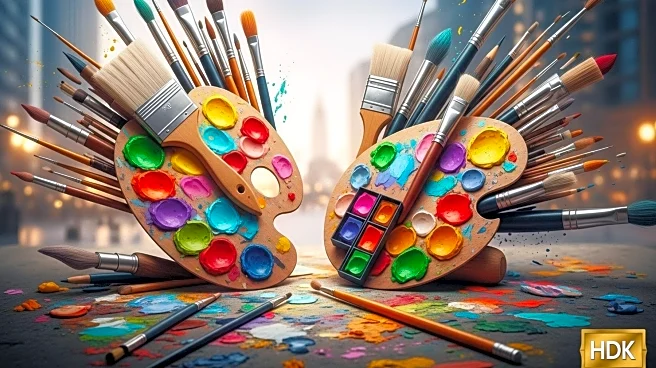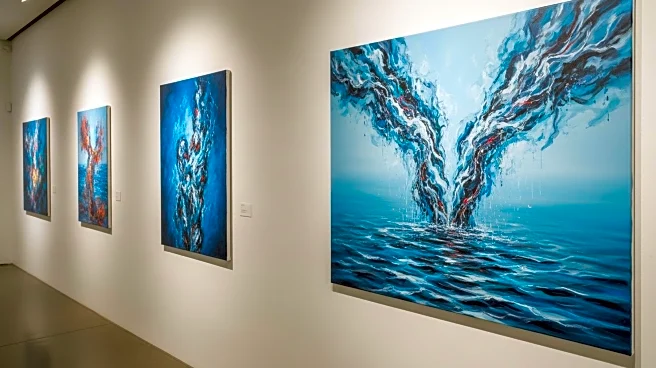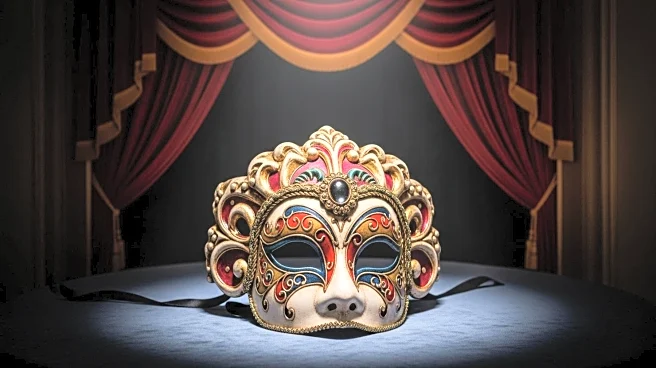What's Happening?
The New York Film Festival recently featured two films that delve into the act of observing art and its implications. Alice Diop's 'Fragments for Venus' and Bingham Bryant's 'Doomed and Famous' both focus on the experience of viewing art, albeit in different contexts. Diop's film, commissioned by the fashion label Miu Miu, is part of the Women's Tales series and explores the representation of Black women in art. It juxtaposes historical art pieces with contemporary scenes from Bed-Stuy, Brooklyn, highlighting the ongoing dialogue about race and identity. Meanwhile, Bryant's 'Doomed and Famous' follows Adrian Dannatt, a New York correspondent for The Art Newspaper, as he navigates an exhibition at Miguel Abreu Gallery. The film combines visual art with philosophical readings, creating a narrative that reflects on the art world and its personalities.
Why It's Important?
These films are significant as they challenge traditional narratives and offer new perspectives on art and identity. Diop's 'Fragments for Venus' contributes to the discourse on representation and the historical portrayal of Black women, while Bryant's 'Doomed and Famous' provides insight into the art world through the lens of personal collections and obituaries. Both films encourage viewers to reconsider how art is perceived and the stories it tells, potentially influencing future artistic and cultural discussions. The inclusion of these films in a major festival underscores the growing importance of diverse voices and perspectives in the arts.
What's Next?
The films' presence at the New York Film Festival may lead to broader discussions about representation in art and the role of personal narratives in shaping cultural understanding. As these films gain attention, they could inspire other filmmakers and artists to explore similar themes, potentially leading to more inclusive and varied artistic expressions. Additionally, the films may prompt institutions to reevaluate how they present art and engage with diverse audiences, fostering a more inclusive environment in the art world.
Beyond the Headlines
The exploration of identity and representation in these films highlights ongoing cultural shifts towards inclusivity and diversity. By focusing on the act of looking at art, the films invite viewers to engage with art in a more critical and reflective manner. This approach aligns with broader societal movements advocating for equity and representation, suggesting that art can be a powerful tool for social change. The films also emphasize the importance of personal narratives and lived experiences in understanding art, which may influence how art is curated and presented in the future.











